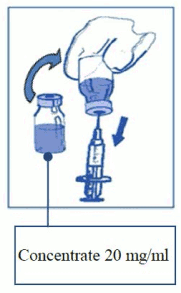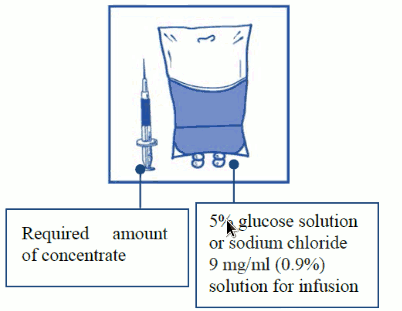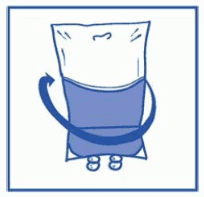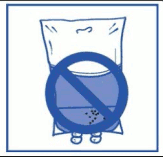CABAZITAXEL ACCORD Concentrate for solution for infusion Ref.[27827] Active ingredients: Cabazitaxel
Source: European Medicines Agency (EU) Revision Year: 2020 Publisher: Accord Healthcare S.L.U., World Trade Center, Moll de Barcelona, s/n, Edifici Est 6ª planta, Barcelona, 08039, Spain
4.1. Therapeutic indications
Cabazitaxel Accord in combination with prednisone or prednisolone is indicated for the treatment of adult patients with metastatic castration resistant prostate cancer previously treated with a docetaxel-containing regimen (see section 5.1).
4.2. Posology and method of administration
The use of cabazitaxel should be confined to units specialised in the administration of cytotoxics and it should only be administered under the supervision of a physician experienced in the use of anticancer chemotherapy. Facilities and equipment for the treatment of serious hypersensitivity reactions like hypotension and bronchospasm must be available (see section 4.4).
Premedication
The recommended premedication regimen should be performed at least 30 minutes prior to each administration of cabazitaxel with the following intravenous medicinal products to mitigate the risk and severity of hypersensitivity:
- antihistamine (dexchlorpheniramine 5 mg or diphenhydramine 25 mg or equivalent),
- corticosteroid (dexamethasone 8 mg or equivalent), and
- H2 antagonist (ranitidine or equivalent) (see section 4.4).
Antiemetic prophylaxis is recommended and can be given orally or intravenously as needed.
Throughout the treatment, adequate hydration of the patient needs to be ensured, in order to prevent complications like renal failure.
Posology
The recommended dose of cabazitaxel is 25 mg/m² administered as a 1 hour intravenous infusion every 3 weeks in combination with oral prednisone or prednisolone 10 mg administered daily throughout treatment.
Dose adjustments
Dose modifications should be made if patients experience the following adverse reactions (Grades refer to Common Terminology Criteria for Adverse Events [CTCAE 4.0]):
Table 1. Recommended dose modifications for adverse reaction in patients treated with cabazitaxel:
| Adverse reactions | Dose modification |
|---|---|
| Prolonged grade ≥3 neutropenia (longer than 1 week) despite appropriate treatment including G-CSF | Delay treatment until neutrophil count is >1,500 cells/mm³, then reduce cabazitaxel dose from 25 mg/m² to 20 mg/m². |
| Febrile neutropenia or neutropenic infection | Delay treatment until improvement or resolution, and until neutrophil count is >1,500 cells/mm³, then reduce cabazitaxel dose from 25 mg/m² to 20 mg/m². |
| Grade ≥3 diarrhoea or persisting diarrhea despite appropriate treatment, including fluid and electrolytes replacement | Delay treatment until improvement or resolution, then reduce cabazitaxel dose from 25 mg/m² to 20 mg/m². |
| Grade >2 peripheral neuropathy | Delay treatment until improvement, then reduce cabazitaxel dose from 25 mg/m² to 20 mg/m². |
If patients continue to experience any of these reactions at 20 mg/m², further dose reduction to 15 mg/m² or discontinuation of cabazitaxel may be considered. Data in patients below the 20 mg/m² dose are limited.
Concomitant medicinal products use
Concomitant medicinal products that are strong inducers or strong inhibitors of CYP3A should be avoided. However, if patients require co-administration of a strong CYP3A inhibitor, a 25% cabazitaxel dose reduction should be considered (see sections 4.4 and 4.5).
Special populations
Hepatic impairment
Cabazitaxel is extensively metabolised by the liver. Patients with mild hepatic impairment (total bilirubin >1 to ≤1.5 x Upper Limit of Normal (ULN) or Aspartate Aminotransferase (AST) >1.5 x ULN), should have cabazitaxel dose reduced to 20 mg/m². Administration of cabazitaxel to patients with mild hepatic impairment should be undertaken with caution and close monitoring of safety. Cabazitaxel Accord must not be given to patients with moderate and severe hepatic impairment (total bilirubin >1.5 x ULN) (see sections 4.3, 4.4 and 5.2).
Renal impairment
Cabazitaxel is minimally excreted through the kidney. No dose adjustment is necessary in patients with renal impairment, not requiring hemodialysis. Patients presenting end stage renal disease (creatinine clearance (CLCR< 15 mL/min/1.73 m²), by their condition and the limited amount of data available should be treated with caution and monitored carefully during treatment (see sections 4.4 and 5.2).
Elderly
No specific dose adjustment for the use of cabazitaxel in elderly patients is recommended (see also sections 4.4, 4.8 and 5.2).
Paediatric population
There is no relevant use of cabazitaxel in the paediatric population. The safety and the efficacy of cabazitaxel in children and adolescents below 18 years of age have not been established (see section 5.1).
Method of administration
Cabazitaxel Accord is for intravenous use.
For instructions on preparation and administration of the product, see section 6.6.
PVC infusion containers and polyurethane infusion sets should not be used.
Cabazitaxel must not be mixed with any other medicinal products than those mentioned in section 6.6.
4.9. Overdose
There is no known antidote to cabazitaxel. The anticipated complications of overdose would consist of exacerbation of adverse reactions as bone marrow suppression and gastrointestinal disorders. In case of overdose, the patient should be kept in a specialised unit and closely monitored. Patients should receive therapeutic G-CSF as soon as possible after discovery of overdose. Other appropriate symptomatic measures should be taken.
6.3. Shelf life
Unopened vial:
3 years.
After opening:
Each vial is for single use and should be used immediately after opening. If not used immediately, inuse storage times and conditions are the responsibility of the user.
After final dilution in the infusion bag/bottle:
Chemical and physical stability of the infusion solution has been demonstrated for 8 hours at ambient temperature (15°C-30°C) including the 1-hour infusion time and for 48 hours at refrigerated conditions including the 1-hour infusion time.
From a microbiological point of view, the infusion solution should be used immediately. If not used immediately, in-use storage times and conditions are the responsibility of the user and would normally not be longer than 24 hour at 2°C–8°C, unless dilution has taken place in controlled and validated aseptic conditions.
6.4. Special precautions for storage
This medicinal product does not require any special temperature storage conditions. Store in the original package in order to protect from light.
For storage conditions after dilution of the medicinal product, see section 6.3.
6.5. Nature and contents of container
3 ml of concentrate in a 6 ml clear tubular glass vial (type I) closed with a 20 mm grey siliconized rubber closure (type I) with teflon film on plug surface and sealed by an aluminium cap covered with a violet plastic flip-off cap.
Each carton contains one single use vial.
6.6. Special precautions for disposal and other handling
Cabazitaxel should only be prepared and administered by personnel trained in handling cytotoxic agents. Pregnant staff should not handle the product. As for any other antineoplastic agent, caution should be exercised when handling and preparing cabazitaxel solutions, taking into account the use of containment devices, personal protective equipment (e.g. gloves), and preparation procedures. If cabazitaxel, at any step of its handling, should come into contact with the skin, wash immediately and thoroughly with soap and water. If it should come into contact with mucous membranes, wash immediately and thoroughly with water.
Preparation for the intravenous administration
DO NOT use together with other cabazitaxel medicinal products with a different concentration cabazitaxel. Cabazitaxel Accord contains 20 mg/ml of cabazitaxel (at least 3 ml deliverable volume). Each vial is of single use and should be used immediately. Discard any unused solution. More than one vial of Cabazitaxel Accord may be necessary to administer the prescribed dose.
The dilution process must be carried out in an aseptic manner for preparing the solution for infusion.
Preparation of the infusion solution
Step 1:
Aseptically withdraw the required volume of Cabazitaxel Accord (which contains 20 mg/ml of cabazitaxel), with a graduated syringe fitted with a needle. As an example, a dose of 45 mg cabazitaxel would require 2.25 ml of the Cabazitaxel Accord.
Step 2:
Inject in a sterile PVC-free container of either 5% glucose solution or sodium chloride 9 mg/ml (0.9%) solution for infusion. The concentration of the infusion solution should be between 0.10 mg/ml and 0.26 mg/ml.
Step 3:
Remove the syringe and mix the content of the infusion bag or bottle manually using a rocking motion. The infusion solution is clear colourless solution.
Step 4:
As with all parenteral products, the resulting infusion solution should be visually inspected prior to use. As the infusion solution is supersaturated, it may crystallize over time. In this case, the solution must not be used and should be discarded.
The infusion solution should be used immediately. However, in-use storage time can be longer under specific conditions mentioned in section 6.3.
An in-line filter of 0.22 micrometer nominal pore size (also referred to as 0.2 micrometer) is recommended during administration.
Do not use PVC infusion containers or polyurethane infusion sets for the preparation and administration of cabazitaxel.
Cabazitaxel must not be mixed with any other medicinal products than those mentioned.
Any unused medicinal product or waste material should be disposed of in accordance with local requirements.
© All content on this website, including data entry, data processing, decision support tools, "RxReasoner" logo and graphics, is the intellectual property of RxReasoner and is protected by copyright laws. Unauthorized reproduction or distribution of any part of this content without explicit written permission from RxReasoner is strictly prohibited. Any third-party content used on this site is acknowledged and utilized under fair use principles.



